Table of Contents
Introduction: Why Cleaning Your Fake Plants Matters
Artificial greenery has become a staple in modern home decor. It adds a natural vibe to spaces without the upkeep real plants demand. Recognizing when and how to clean fake plants can prevent long-term wear and dust buildup. But just because they’re low maintenance doesn’t mean they’re no maintenance. If you’ve ever wondered how to clean fake plants without damaging them or making a mess, you’re in the right place.
Over time, faux plants collect dust, pet hair, and airborne particles. While you might not notice it immediately, this buildup dulls their vibrant appearance and can even affect indoor air quality. For allergy sufferers, dust-covered artificial plants can be just as problematic as unwashed drapes or upholstery.
This guide will walk you through exactly how to clean fake plants so they look brand new again.
Keeping your fake greenery clean isn’t just about aesthetics—it’s also about creating a healthier, fresher living space. Whether you have plastic succulents, silk flower bouquets, or towering faux trees, regular care keeps them looking lifelike for years.
Let’s explore the best, most effective methods for how to clean fake plants in every room of your home.
Artificial Plants: More Realistic, Less Work
Today’s artificial plants are incredibly realistic. From textured leaves to detailed petals, they’re designed to mimic nature in style and structure. But with that realism comes one challenge: dirt shows. The better your faux plant looks, the more obvious it becomes when it’s covered in dust or fading from neglect.
The good news? Cleaning them is easier than you think. Most artificial plants require only basic upkeep—and even a quick once-over can make a huge difference. Throughout this guide, we’ll walk you through exactly how to clean fake plants using practical tips and safe methods.
When Should You Clean Fake Plants?
As a general rule in knowing how to clean fake plants, you should give your artificial plants a light cleaning every 2–4 weeks, depending on your space. Homes with pets or open windows may need more frequent touch-ups. And once every few months, a deeper clean will help restore their shine and remove stubborn grime.
One of the biggest advantages of knowing how to clean fake plants is preserving their texture and natural look.
You’ll also want to consider seasonal cleaning. If your plants are part of holiday or spring decor, it’s a great idea to freshen them up before putting them on display. This helps maintain their appearance and reduces allergens in the home.
Cleaning Benefits Go Beyond Looks
Yes, clean plants look better—but they also last longer. Dust and residue can degrade faux foliage over time, especially on delicate silk or fabric-based items. Regular upkeep protects your investment and ensures your plants stay as beautiful as the day you bought them.
There’s also the matter of health. While artificial plants don’t harbor mold or pests like real ones, they can still trap allergens. By learning how to clean fake plants properly, you reduce irritants in your home, especially in bedrooms and high-traffic living spaces.
The more you understand how to clean fake plants properly, the longer they’ll stay part of your decor.
What This Guide Will Cover
This comprehensive guide is designed to help anyone—from first-time fake plant owners to seasoned decor lovers. You’ll learn how to:
- Identify your plant type and tailor your cleaning methods accordingly
- Use safe and effective tools already in your home
- Deep-clean stubborn grime without damaging the structure
- Maintain a fresh, clean look all year long
- If leaves feel sticky or appear grey, it’s time to revisit how to clean fake plants the right way.
Plus, we’ll recommend a few high-quality artificial plants that are easy to clean and fit beautifully into any decor style. If you’re looking for durable, low-effort pieces, stay tuned.
Let’s dive into the details of how to clean fake plants—and keep them looking like new.
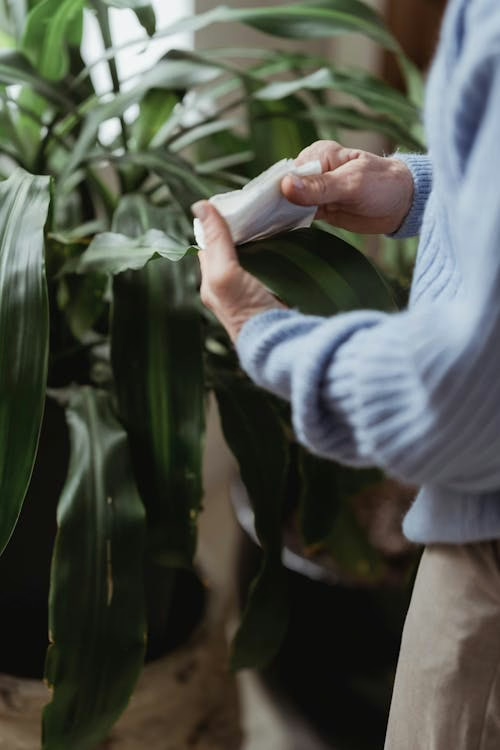
Understanding Your Artificial Plants
Before diving into how to clean fake plants, it’s crucial to understand what they’re made of. The materials used in artificial greenery play a big role in how they should be cleaned—and how much care you should take when doing it.
Common Materials Used in Fake Plants
Most artificial plants fall into a few common categories when it comes to construction. Each type has its own cleaning needs and fragility levels:
- Plastic or polyethylene: These are among the most durable fake plants. You’ll often find them in potted desk succulents, large indoor trees, and outdoor-ready pieces. They’re typically waterproof and can handle more thorough cleaning techniques.
- Silk or polyester fabric: These are popular in faux flowers and realistic leaf detailing. They’re more delicate and prone to fading or fraying. Cleaning them requires a gentler approach and should avoid soaking or scrubbing.
- Foam or rubber: Some artificial greenery features rubberized textures or foam components. While soft to the touch and very lifelike, these materials can be damaged by harsh chemicals or water saturation.
- Mixed materials: Many modern artificial plants use a combination of fabric leaves and plastic stems, or textured paper and wire inserts. These need careful attention when cleaning to avoid loosening glue or damaging joints.
How to Identify Your Plant’s Material
If you’re unsure what your artificial plant is made of, here are a few easy ways to tell:
- Feel the leaves — are they soft like fabric or smooth like plastic?
- Look at the edges — fraying usually means silk or polyester.
- Check the stems — thick and rigid usually means plastic, while bendable stems may include metal wiring.
- Use the product packaging or listing if you still have it—most include the materials used.
This step may seem minor, but it’s the foundation of effective maintenance. Using the wrong method on the wrong material could lead to water damage, discoloration, or even tearing. The more you understand your plant’s construction, the more confidently you’ll know how to clean fake plants the right way.
Indoor vs. Outdoor Artificial Plants
Artificial plants designed for indoor use tend to be more fragile. They’re often made with lighter, more detailed materials that focus on aesthetics. On the other hand, outdoor faux plants are built to withstand elements like sun and rain—often made of UV-resistant plastic or rubberized materials.
This difference also influences cleaning. Outdoor artificial plants can usually handle more direct methods like rinsing or hose sprays, while indoor versions may need to be spot-cleaned or wiped by hand.
Why It Matters for Cleaning
Using a one-size-fits-all approach to cleaning artificial plants just doesn’t work. If you know your piece is silk-based, you’ll want to skip water-based cleaning entirely and opt for dry dusting or gentle air sprays. Meanwhile, a durable plastic topiary can probably handle a soft rinse in your shower or sink.
Later in this guide, we’ll walk through multiple cleaning methods—categorized by material type—so you can match the right solution to your specific plant. The result? A clean, vibrant faux plant with no damage and no guesswork.
Up next: let’s get into basic, routine cleaning practices that work for most artificial greenery, starting with dusting, brushing, and light wipes. These tips are safe for nearly every plant type and form the core of keeping your decor looking brand new.
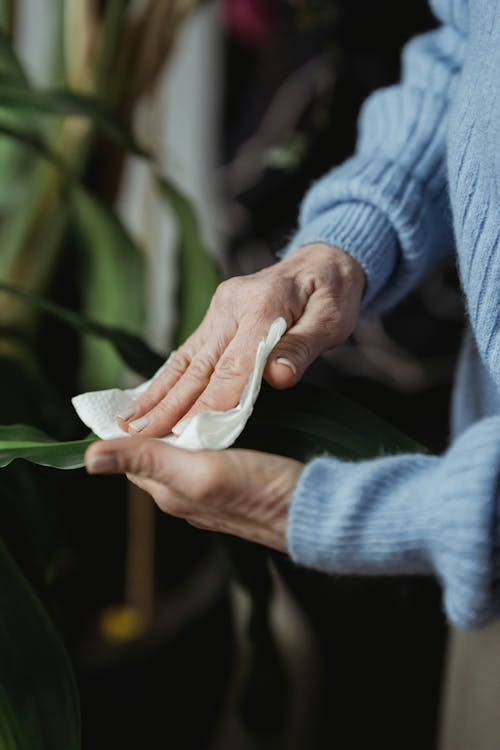
Basic Cleaning Techniques for Artificial Plants
Before diving into deep cleaning methods, let’s cover the essential techniques every faux plant owner should know. These approaches work for nearly all types of artificial greenery and are safe, quick, and highly effective.
Basic methods for how to clean fake plants include gentle dusting, dry wiping, and using small tools.
Why Basic Cleaning Should Be Routine
Even the most realistic faux plants start to look dull when covered in a layer of dust. That’s why regular upkeep is key. Knowing how to clean fake plants with minimal effort can keep your decor fresh, vibrant, and display-ready all year round.
1. Dusting with a Microfiber Cloth
This is the easiest and safest way to clean most artificial plants. Use a dry microfiber cloth to gently wipe down the leaves and stems, moving from top to bottom to avoid scattering dust. This technique works especially well for flat plastic leaves and thicker fabric foliage.
For small items like desktop succulents or compact flower arrangements, wrap the cloth around your finger to get into tight corners without damaging the petals.
2. Using a Soft Paintbrush for Delicate Plants
If your artificial plant includes silk flowers or intricate leaf patterns, a clean paintbrush or makeup brush is ideal. Gently sweep away dust and debris from crevices and detailed areas. This method preserves the integrity of soft fabrics and avoids bending or crumpling delicate parts.
Always brush in the direction of the leaf grain and take your time—rushing can snag thin materials or dislodge glued elements.
3. Compressed Air for Hard-to-Reach Spots
For detailed arrangements, or those with multiple overlapping elements, a can of compressed air works wonders. Short bursts can lift dust from corners where cloths or brushes can’t reach. Just be sure to hold the can at a slight angle and don’t blast too closely—especially with silk or foam components.
Compressed air is an underrated tool when researching how to clean fake plants in hard-to-reach spaces.
This trick is especially useful for small succulents and densely packed arrangements.
4. Wiping with a Damp Cloth
When light dusting isn’t enough, a slightly damp cloth (just water—no chemicals) can help lift surface grime from plastic or rubber leaves. Avoid using this method on fabric or paper-based plants, as moisture can cause color bleeding or warping.
Wipe gently and follow up with a dry cloth to remove any excess water. Never soak artificial plants—unless they’re fully plastic and labeled water-safe.
5. Quick Tip: Use a Hair Dryer on Cool Setting
Another gentle alternative is a hair dryer set to “cool” or “low.” This is a fast way to remove dust from larger faux trees or vertical arrangements. It’s safe for most materials, but again—avoid direct airflow on fragile silk blooms.
How Often Should You Clean?
As a general rule, light cleaning every two to three weeks is ideal for most spaces. If your plants are near windows, fans, or vents, consider weekly dusting. Kitchens may need more frequent care due to airborne grease and particles.
The more consistent your routine, the less often you’ll need to deep-clean. Understanding how to clean fake plants with simple methods saves you time and keeps your greenery camera-ready at all times. Now that you’ve mastered how to clean fake plants on the surface, let’s look at deeper cleaning methods.
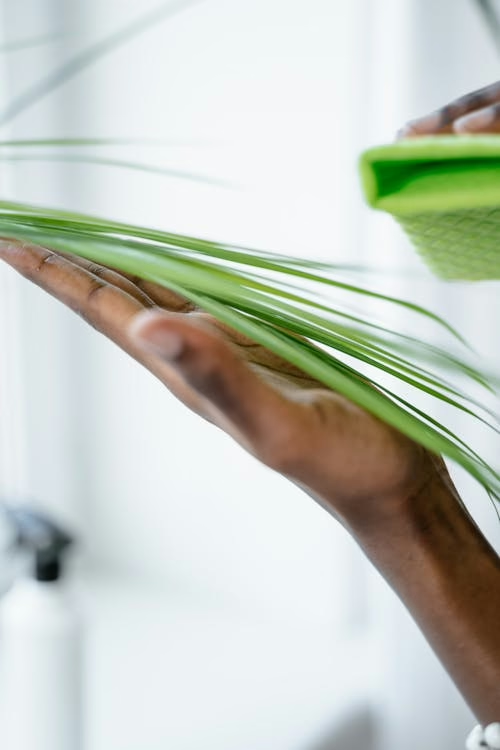
Deep Cleaning Methods for Stubborn Dirt
For those wondering how to clean fake plants that haven’t been maintained in a while, deep cleaning is essential. Sometimes, basic dusting isn’t enough—especially for faux plants placed in high-traffic areas, kitchens, or near open windows. When grime builds up or sticky residue settles in, it’s time to move beyond the basics. Knowing how to clean fake plant thoroughly and safely ensures your decor stays spotless without damage.
1. Gentle Soaking for Plastic-Based Plants
If your artificial plant is made entirely of plastic (no fabric or foam), a gentle water soak is one of the most effective methods. Fill a clean sink or tub with lukewarm water and a small drop of mild dish soap. Swish the plant around for a few seconds, then rinse with fresh water and shake gently to remove excess moisture.
Place the plant on a towel to air-dry naturally. Avoid hot water or harsh soap—these can warp or discolor leaves.
Product Spotlight: CETRD Artificial Outdoor Tree
For example, the CETRD Artificial Outdoor Tree is made from water-safe, realistic plastic that handles deep cleaning like a champ. This makes it ideal for patios, balconies, or mudrooms—areas where more dirt tends to accumulate. Just rinse it under the shower or garden hose, then let it drip dry in the shade.
2. Vinegar and Water Spray for Grime Removal
Mix equal parts water and white vinegar in a spray bottle for a natural, effective cleaning solution. Lightly mist the leaves and stems, then wipe gently with a clean cloth. This technique is excellent for removing grease, fingerprints, or other buildup that regular dusting can’t tackle.
Don’t oversaturate—especially if your plant has a glued base or includes wire components. Always test a small hidden area before treating the entire plant.
This gentle mixture is perfect for how to clean fake plants that collect grease in kitchens or bathrooms.
3. Cotton Swabs for Crevices
When your faux plant has lots of overlapping petals or tightly curled leaves, use cotton swabs or Q-tips dampened with water. These are perfect for spot-treating delicate areas without disturbing the overall structure.
This technique is particularly helpful with layered succulents or tiny floral arrangements where grime tends to settle deep in the folds. Cotton swabs are ideal for detailed work when learning how to clean fake plants with intricate designs.
4. Vacuuming with a Brush Attachment
Believe it or not, a vacuum cleaner can also be a helpful cleaning tool—if you use the soft brush attachment. Set your vacuum to the lowest setting and gently run the brush over each leaf. It lifts out dust quickly and efficiently from medium- to large-sized plants.
Never vacuum silk or foam components. Stick with plastic-based pieces or robust structural elements.
5. Rinsing with a Spray Bottle and Drain Rack
For medium-sized faux plants with plastic leaves, a gentle rinse using a spray bottle over a dish drying rack works well. After spraying, shake off the excess and allow the plant to dry upside-down to prevent water pooling at the base.
This method works wonders for plastic arrangements that live on kitchen counters, where grime is more likely to stick.
Important Safety Note
As we move forward, keep in mind that knowing how to clean fake plants based on material type makes all the difference.
Never use bleach, glass cleaner, or chemical disinfectants on your artificial plants. These substances can damage coloring, melt adhesives, or degrade textures over time. Always opt for natural or gentle solutions and spot test if you’re unsure.
Coming up next in the guide on how to clean fake plants, we’ll walk through specialized cleaning tips based on plant types—like silk flowers, mini succulents, and large statement trees—so you’ll always know exactly how to clean fake plants the right way.
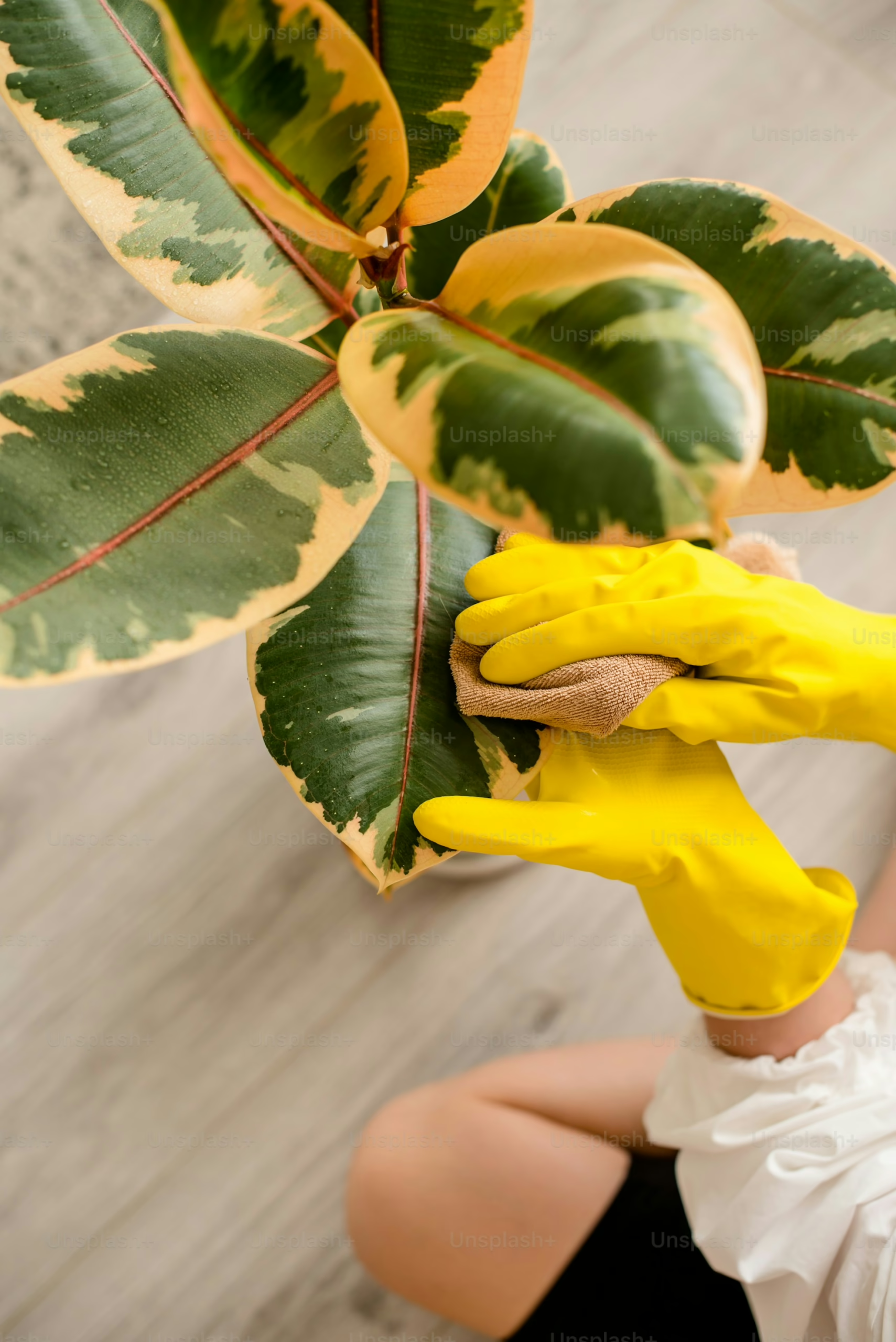
Specialized Care for Different Types of Fake Plants
Every faux plant isn’t created equal. While basic techniques work for general upkeep, certain styles and materials need a more tailored approach. In this section, we’ll break down how to clean fake plants by type—ensuring the safest and most effective results for everything from delicate silk flowers to dense succulents.
1. Cleaning Silk Flowers
Silk or polyester flowers often look the most realistic but are also the most delicate. They fray easily and don’t respond well to moisture. For these, avoid water-based methods entirely.
- Use a soft makeup brush or artist’s paintbrush to gently sweep away dust.
- Try a gentle blast of air from a hairdryer on cool to refresh petals.
- Optional: sprinkle petals with cornmeal or salt in a paper bag, shake gently, then remove and brush off residue—an old trick that helps lift grime from fibers.
Never soak or spray silk plants; they may discolor or warp. A light, dry touch is always best. If you’re unsure how to clean fake plants made from silk, avoid any moisture and use a brush instead.
2. Cleaning Mini Succulents and Compact Arrangements
Faux succulents and tabletop arrangements often have small, clustered components. This makes dusting a bit trickier—but not impossible.
Use a cotton swab, soft bristle brush, or compressed air to reach the crevices. For surface buildup, a damp cloth wrapped around your finger can target specific spots without disturbing the overall structure.
These pieces are ideal for home offices, shelves, and counters. Just be careful not to knock over fragile arrangements while cleaning.
Miniature faux succulents require a unique approach to how to clean fake plants without damaging their structure.
Product Highlight: MyGift Mini Succulent Arrangement
A great example is the MyGift Artificial Succulent Arrangement. With its concrete base and compact succulent heads, it’s built to last and clean easily. Use a small brush or air duster to keep the faux soil and plant tips looking crisp without wetting the concrete planter.
3. Cleaning Tall Trees and Statement Plants
Larger faux plants and trees—often used in entryways, living rooms, or corners—are easier to access but require a bit more time. These usually have flexible branches, plastic leaves, and a taller reach.
- Use a microfiber cloth or feather duster to clean top to bottom.
- Wipe plastic leaves with a slightly damp cloth and dry immediately.
- Use a vacuum cleaner with a soft brush head for trunk and base areas.
For hard-to-reach tops, use a step stool and dust from the center outward. Avoid dragging dust over clean areas—this can redistribute grime. Also, a feather duster is a go-to tool when showing someone how to clean fake plants quickly without water.
It’s one of the fastest and safest methods for how to clean fake plants without needing harsh tools or chemicals.
4. Mixed Material Plants
Some artificial plants include combinations of materials: fabric petals, plastic stems, and metal wiring. These require a multi-step approach:
- Start with dry dusting for fabric components.
- Spot-clean plastic parts with a damp cloth.
- Avoid moisture near glue points or seams where parts join.
When in doubt, always go with the gentlest cleaning method possible. That way, you preserve your plant’s structure while keeping it looking fresh. Mixed materials require extra care when considering how to clean fake plants without damaging any component.
If you’re looking for inspiration or more information on how to clean fake plants, style or group artificial plants by room, visit our Mini Plants category to explore options that are both stylish and simple to maintain.
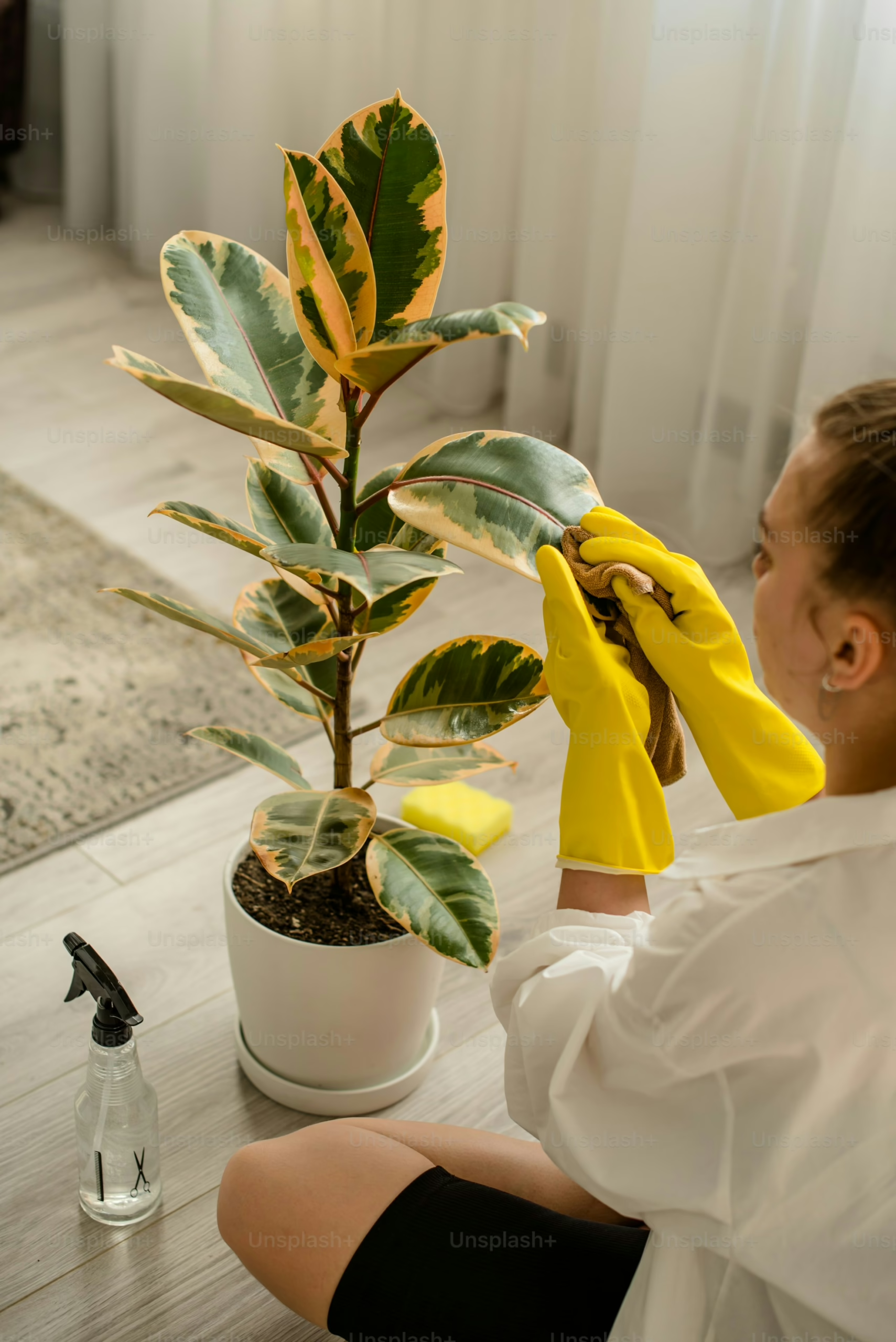
Next up, we’ll share long-term maintenance strategies to keep your faux greenery dust-free and stunning with minimal effort.
Maintenance Tips to Keep Fake Plants Looking New
Once you understand how to clean fake plants, keeping them looking great becomes second nature. With just a little effort, you can extend the life and beauty of your decor dramatically. Whether your plants live on a windowsill, a bookshelf, or as part of a seasonal centerpiece, these tips will help you maintain them with ease.
1. Choose the Right Placement
Faux plants may not need sunlight, but placement still matters. Avoid putting them directly under ceiling fans, air vents, or open windows—areas where dust and debris settle more quickly. In kitchens, avoid placing them near stovetops or cooking areas where grease particles can cling to leaves.
Instead, aim for low-traffic, cool spots where your artificial plants can maintain their look longer between cleanings.
2. Rotate Regularly
Over time, artificial plants can develop a “flat side” if they’re not rotated occasionally. Set a reminder every few weeks to rotate potted pieces or reposition arrangements. This prevents sun fading on one side and allows you to dust more evenly.
3. Store Seasonal Plants Properly
If you use artificial greenery for specific seasons—like spring florals or holiday wreaths—store them correctly when not in use. Wrap silk flowers loosely in tissue paper and place them in plastic bins. Keep them in a cool, dry place to prevent discoloration or warping.
Never cram multiple pieces into one container; this can cause bending, fraying, and crushed edges. Instead, stack items with protective layers in between.
4. Use Preventative Cleaning Tools
Consider investing in a few tools that make routine upkeep easier. A handheld air blower or compressed air canister, soft detailing brush, and microfiber cloth go a long way in preserving your artificial plants’ appeal without the hassle.
Having a go-to toolkit is crucial for how to clean fake plants in just a few minutes each week.
You can even find sprays designed specifically for faux foliage that reduce static and help repel dust. These are great for plants in high-traffic areas like entryways or dining rooms.
Product Highlight: MQcrafts Artificial Flowers
Delicate displays like the MQcrafts Artificial Flowers make beautiful centerpieces, but they also attract more dust due to their open structure. These kinds of arrangements should be dusted weekly using a soft, dry cloth or low-speed air. For long-term storage, wrap the flowers gently to avoid bending the stems or petals. Knowing how to clean fake plants will definitely make you keep it for longer, and keep the value for your buck!
5. Keep a Cleaning Schedule
Knowing how to clean fake plants is great—but consistency is what makes the difference. Incorporate quick dusting into your bi-weekly home routine, and schedule a full deep clean every 2–3 months depending on where your plants are displayed.
Using a calendar app or home maintenance checklist can help you stay on top of it without much effort. You’ll be amazed how much longer your faux plants stay photo-ready. Setting a reminder makes it easier to stay consistent with how to clean fake plants on a regular basis.
6. Evaluate and Replace When Needed
Even now if you know how to clean fake plants, no matter how well you clean or store your artificial greenery, some items eventually wear out. Fading, fraying, or shedding are signs it may be time to replace a piece. Fortunately, today’s artificial plants are more affordable and durable than ever.
If you’re ready for an upgrade, be sure to browse our artificial flowers section for realistic, easy-to-clean alternatives that brighten up any space with zero maintenance stress.
Up next, we’ll recommend essential products to make cleaning and maintaining your fake plants easier than ever. Even when you know how to clean fake plants well, some pieces eventually need to be replaced.
Following these strategies ensures that how to clean fake plants becomes a regular, easy part of your routine.
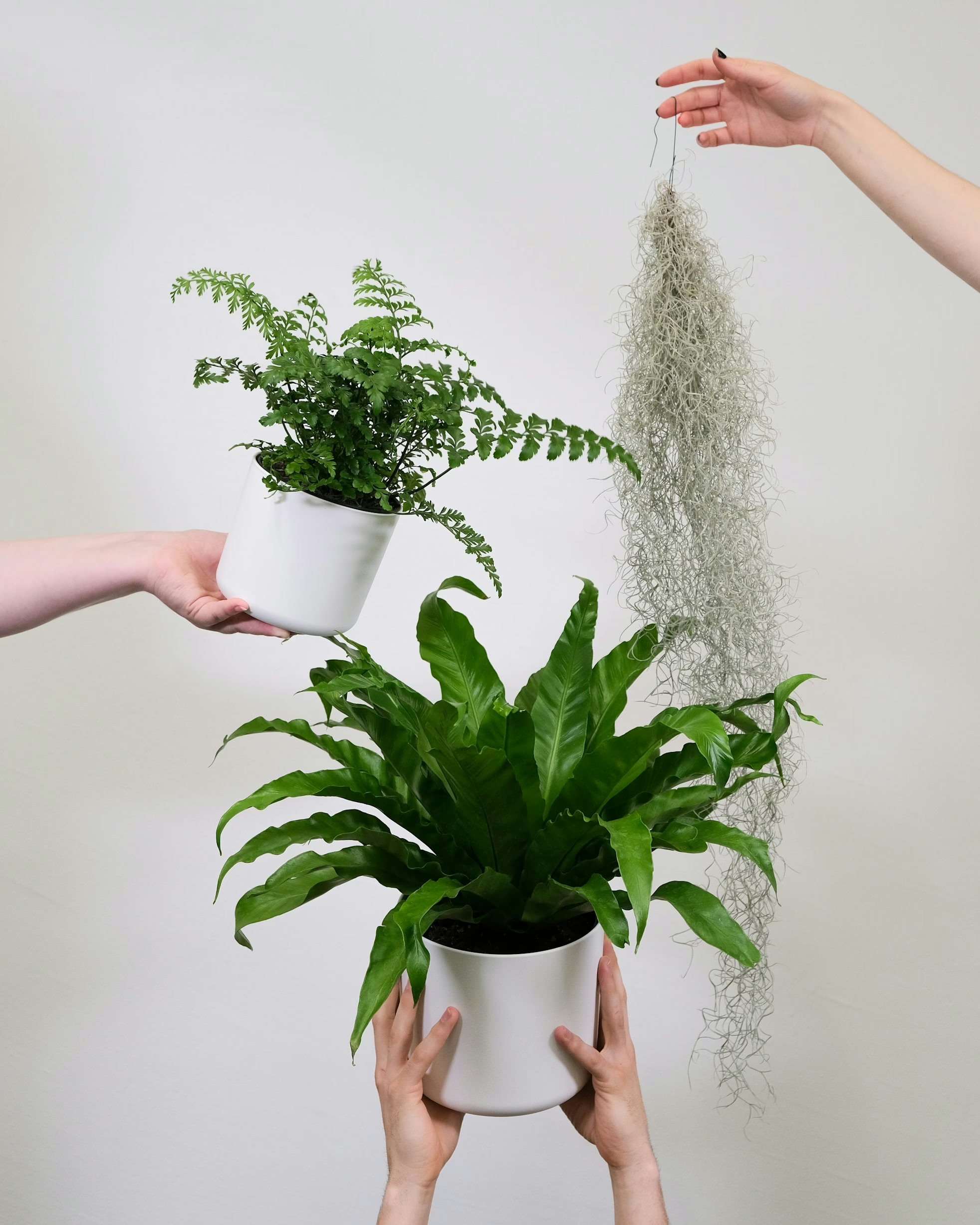
Recommended Products for Cleaning and Maintenance
Having the right tools makes all the difference when it comes to keeping artificial plants fresh and dust-free. While you now know how to clean fake plants effectively, these recommended items can streamline your routine and make the job faster, easier, and more precise.
1. Microfiber Cloths
Microfiber cloths are a must-have for every fake plant owner. Their ultra-fine fibers trap dust without scratching surfaces or pushing debris around. Use them dry for weekly dusting or slightly dampened for wiping plastic leaves.
- Safe for all surfaces
- Machine washable and reusable
- Ideal for large leafy plants and plastic arrangements
2. Soft Detailing Brushes
Small brushes—like clean makeup brushes or artist’s paintbrushes—are perfect for delicate petals, succulents, or crevices where cloths can’t reach. Choose brushes with soft bristles to avoid snagging silk or polyester fabrics.
- Essential for cleaning faux succulents and silk flowers
- Great for reaching under petals and around stems
- Portable and easy to store with your cleaning supplies
3. Compressed Air Canisters
For hard-to-reach dust in dense arrangements or tight corners, compressed air offers a fast, touch-free solution. One quick blast can refresh plants on shelves, in terrariums, or inside decorative jars without disassembling them. Sometimes it helps knowing how to clean fake plants ;).
- Best for high shelves or intricate decor
- Safe for plastic and silk (use with caution)
- Avoid using close to glued or lightweight parts
4. Spray Bottles with Natural Cleaner
A basic spray bottle filled with distilled water or a mild vinegar solution can be your best ally for removing stubborn residue. Mist lightly and wipe with a cloth. This is especially useful for plastic plants used in kitchens, bathrooms, or outdoor patios.
- Use 50/50 water and vinegar for a gentle cleaner
- Perfect for larger faux trees and UV-treated plastic decor
- Do not use on silk or fabric-based plants
5. Storage Bins for Seasonal Faux Plants
When rotating decor with the seasons, proper storage is key. Use large plastic bins with lids, and line them with tissue or bubble wrap. Avoid overpacking to prevent bending or damage during storage.
- Protects delicate blooms from fading and crushing
- Great for organizing spring florals or holiday greenery
- Label bins for easy retrieval next year
- Proper storage complements how to clean fake plants, especially when rotating seasonal arrangements.
6. Optional Anti-Static Spray
Anti-static sprays can help repel dust and reduce buildup on certain artificial plants. They’re not essential but can be helpful in homes with pets, fans, or lots of airborne debris. Use only on plastic foliage and never on silk or foam.
If you’re unsure about a product, always test it on a small hidden area first.
Bonus: Bookmark a Cleaning Guide
Now that you’ve learned how to clean fake plants like a pro, bookmark this guide or check out our other care articles for more helpful tips. You might also enjoy our post on how to style fake plants for maximum visual impact.
In the next section, we’ll answer some frequently asked questions about fake plant maintenance—and share a few final reminders to keep your greenery looking flawless year-round.
Frequently Asked Questions
How often should I clean my fake plants?
Light dusting every two weeks is ideal for most spaces. If your plants are near windows, fans, or kitchens, weekly upkeep is recommended. Deep cleaning should be done every 2–3 months to prevent buildup and keep them looking vibrant.
Can I wash my artificial plants with soap and water?
Only if they’re made entirely of plastic or labeled water-safe. Use mild dish soap and lukewarm water, then rinse and air-dry. Avoid soaking silk, foam, or glued components, as these materials can be damaged by moisture.
What’s the best way to clean silk flowers?
Use a soft brush or feather duster to remove surface dust. For stubborn dirt, place the flowers in a paper bag with cornstarch or salt, shake gently, and brush off the residue. Never use water on silk flowers—it can cause color bleeding or fraying.
Do I need special tools to clean fake plants?
No, but having the right tools helps. Microfiber cloths, paintbrushes, compressed air, and cotton swabs make cleaning easier and more effective. Check out our styling and care tips here for more ideas.
Can fake plants go outside, and how do I clean them if they do?
Some faux plants are made specifically for outdoor use and are UV-protected. These can be rinsed with a hose or wiped down with a damp cloth. Just be sure to let them dry thoroughly in the shade to prevent mold or fading.
Still unsure how to clean fake plants based on material or size? Bookmark this guide and refer back anytime.
Conclusion: Keep Your Faux Plants Fresh and Fabulous
- Understanding your artificial plant’s material is the first step to choosing the correct cleaning method.
- Routine dusting with microfiber cloths, brushes, or compressed air helps maintain long-term freshness.
- Deep cleaning with water or vinegar-based solutions works best for plastic-based plants.
- Silk and fabric-based faux plants require gentle, dry cleaning methods only.
- Placement, storage, and rotation are simple yet powerful ways to keep your greenery looking natural and beautiful.
With these strategies, you’ll no longer wonder how to clean fake plants effectively—you’ll be doing it like a pro. Now that you know how to clean fake plants, whether you’re maintaining a stylish centerpiece, a shelf-top succulent, or a large entryway tree, the right care makes all the difference in extending its life and keeping your home looking polished. From deep cleaning to routine upkeep, mastering how to clean fake plants ensures they always look their best.
For more tips on artificial greenery, explore our other guides on Mini Artificial Plants, Artificial Flowers, and seasonal decor inspiration on our blog.
Happy decorating!





Leave a Reply
You must be logged in to post a comment.